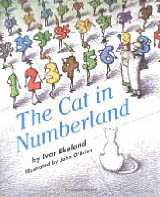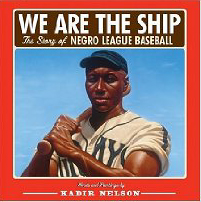Review of Knucklehead, by Jon Scieszka

Knucklehead
Tall Tales & Mostly True Stories About Growing Up Scieszka
by Jon Scieszka
Viking, 2008. 106 pages.
Starred Review
Now we know how Jon Scieszka got so funny! He grew up with five brothers.
I got to hear the author read from this book at the National Book Festival in September, so I knew I simply had to read the book myself. It turned out that the parts he read were by no means the only hilarious parts.
The cover is like a comic book. The chapters are short. And funny. The whole thing is beautifully designed to draw kids in and not let them go.
Now, I have seven brothers myself (but six sisters — which makes a big difference!), so he couldn’t really surprise me with his stories. His take on the mayhem and the bright ideas six boys can come up with are invariably hilarious. Several chapters end with a “Knucklehead Warning: Do not try this at home . . . or anywhere else.” (But he makes them sound so much fun!)
I love the babysitting chapter. Why didn’t we think of this?
“We didn’t get paid for babysitting. Until one day Jim and I figured out a great way to make a little money on the job.
“We were watching Jeff. He had rolled under a chair and got stuck. We dragged him out and stood him up holding on to the coffee table. And that’s when Jeff spotted the ashtray.
“We watched Jeff grab a cigarette butt.
“We watched Jeff put it in his mouth.
“We watched Jeff chew the butt, make a crazy face, then spit it out.
“Jim and I cracked up laughing.
“Then we gave Jeff another butt and watched him do it all over again.
“It was such a great trick that we charged all of our friends ten cents to watch.”
I also love his chapter about learning to read. He talks about the very strange family he read about in school.
“The alien kids were named Dick and Jane. Strangest kids I ever heard of. . . .
“When I read the Dick and Jane stories, I thought they were afraid they might forget each other’s names. Because they always said each other’s names. A lot.
“So if Jane didn’t see the dog, Dick would say, ‘Look Jane. Look. There is the dog next to Sally, Jane. The dog is also next to Mother, Jane. The dog is next to Father, Jane. Ha, ha, ha. That is funny, Jane.’
“Did I mention that Dick and Jane also had a terrible sense of humor?
“At home my mom read me real stories. These were stories that sounded like my life. These were stories that made sense. She read me a story about a guy named Sam. Sam-I-am. He was a fan of green eggs and ham.
“And then there was the story about the dogs. Blue dogs. Yellow dogs. Dogs that were up. Dogs that were down. Dogs that drove around in cars and met each other at the end of the book for a giant party in a tree. I cheered them on. Go, dogs. Go! I read about them all by myself because I wanted to. Go, dogs. Go!
“So I guess I didn’t really learn to read by reading about those weirdos Dick and Jane. I learned to read because I wanted to find out more about real things like dogs in cars and cats in hats.”
This book is tremendous fun. Jon Scieszka is the first National Ambassador for Young People’s Literature, with a special mission to Reach the Reluctant Reader. This book will do that beautifully. What kid (or adult) could resist?
Find this review on the main site at:







